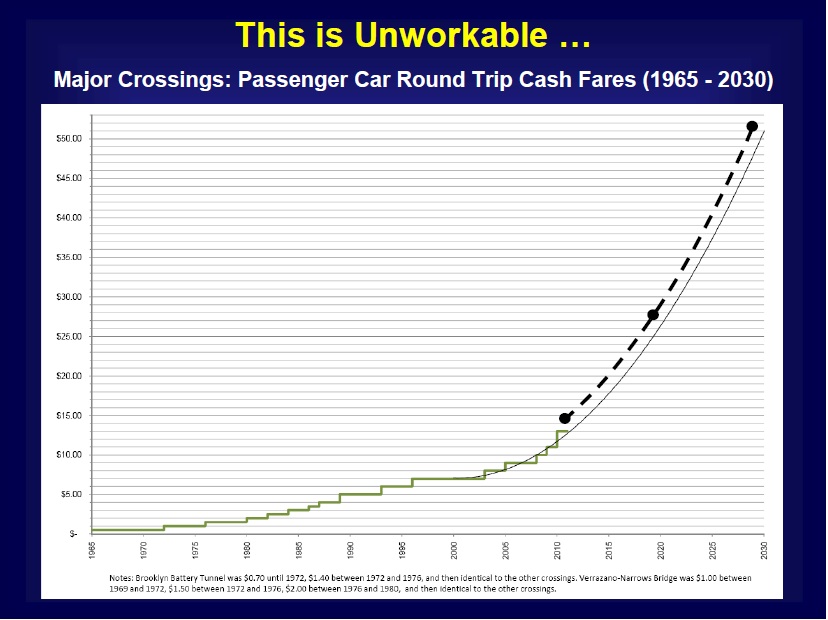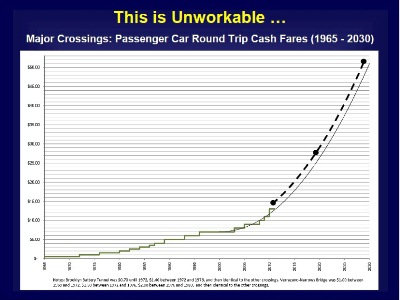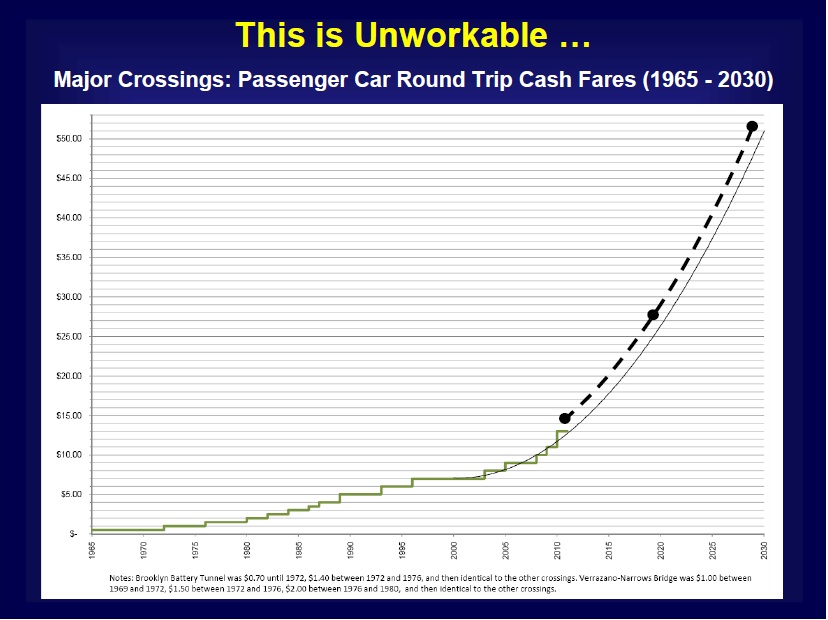by: admin

A slide from Schwartz’ presentation.
Event: “Don’t Call It Congestion Pricing”: Sam Schwartz’s Transportation Strategy
Location: Center for Architecture, 06.05.12
Speaker: Sam Schwartz, P.E., Founder, President, CEO, Sam Schwartz Engineering
Respondents: Buzz Paaswell, Director, University Transportation Research Center, City College of New York; Jeff Zupan, Senior Fellow for Transportation, Regional Plan Association; Jim Wright, AIA, HDR Inc., former Co-chair AIANY Transportation & Infrastructure Committee; David Fields, AICP, Nelson/Nygaard, Co-chair APA Transportation Committee
Moderator: Ernie Hutton, Assoc. AIA, FAICP, Hutton Associates, co-chair, AIANY Planning & Urban Design Committee
Organizers: AIANY Planning & Urban Design Committee, AIANY Transportation & Infrastructure Committee, and NY APA
If you know, as so many do, Sam Schwartz, P.E., a leading traffic engineer and a former traffic commissioner during the Koch administration, by his alias “Gridlock Sam,” you are aware of his preoccupation with traffic, and just how much he detests the delays it causes. When Schwartz started working at the New York City Traffic Department in 1971, he created a congestion pricing plan that involved tolling the city’s four free East River bridges. It was approved by the city and state, but was ultimately was blocked by an act of Congress.
Even though congestion pricing plans also failed in 1980 and 2008, Schwartz is a stalwart. He is currently making the stakeholder rounds with his latest “equitable pricing plan” for the Metro New York area, and this time he has enlisted numbers-crunchers to quantify its feasibility.
According to Ernie Hutton, Assoc. AIA, FAICP, co-chair of the AIANY Planning and Urban Design Committee, “AIANY was supportive (with some caveats) of Mayor Bloomberg’s 2008 ‘congestion pricing’ attempt to provide funding for MTA. Schwartz’s proposals are an attempt to learn from that experience and to give some real benefits to some of the opponents, rationalizing bridge and tunnel tolling and achieving many of the same objectives for MTA. With our partners – the APA Metro Chapter and others – we hope to put such considerations on the table in the year.”
As a non-driver, it never occurred to me that people “bridge shop.” All highways lead to the three tolled East River crossings. To avoid paying the Queens Midtown Tunnel toll, vehicles can clog Long Island City streets to take the free Ed Koch Queensboro Bridge into Manhattan’s central business district. Conversely, we toll everyone driving to Staten Island as if the borough were one huge business district. And if you’re a trucker going from Brooklyn to New Jersey, it is quite a savings to skip the Verrazano Bridge and the Staten Island Expressway, and using, instead, the Goethals Bridge to New Jersey, or crossing the aging Manhattan Bridge to local Manhattan streets to take one of the Hudson River tunnels.
Fair pricing is also about capital improvements to our transit systems, roads, and bridges, in addition to the jobs created as a result. It’s about implementing ideas such as widening the Belt Parkway to allow trucks, or having a rapid-transit lane down the median of the Belt, the Bruckner Expressway, or the Long Island Expressway, all in an effort to keep our infrastructure in a “state of good repair.”
Perhaps the most visionary components of this plan are three new pedestrian/bike bridges. Two would cross the East River from Brooklyn and Queens, one culminating in the financial district after stopping off on Governors Island, the second ending in midtown. The third bridge would span the Hudson between New Jersey and Chelsea. These toll bridges would appeal to and serve the area’s growing young population that walks, bikes, and uses mass transit.
According to panelist Buzz Paaswell, director of the University Transportation Research Center: “We need officials with vision and we need a champion to see it or else we’ll have the same lecture from Sam every year.”
Linda G. Miller is a contributing editor to Oculus and e-Oculus.










